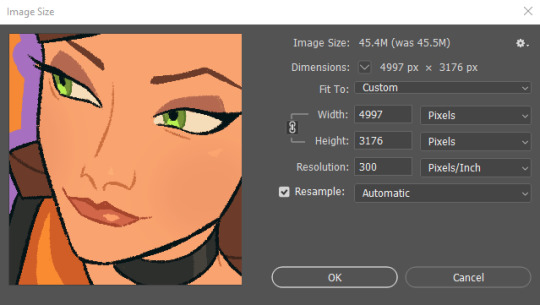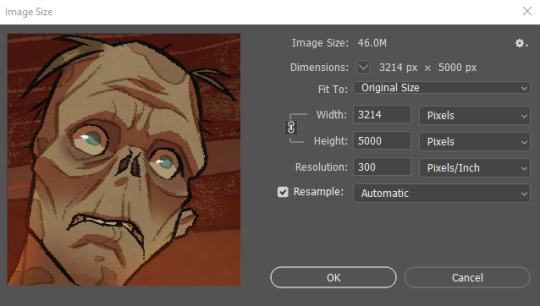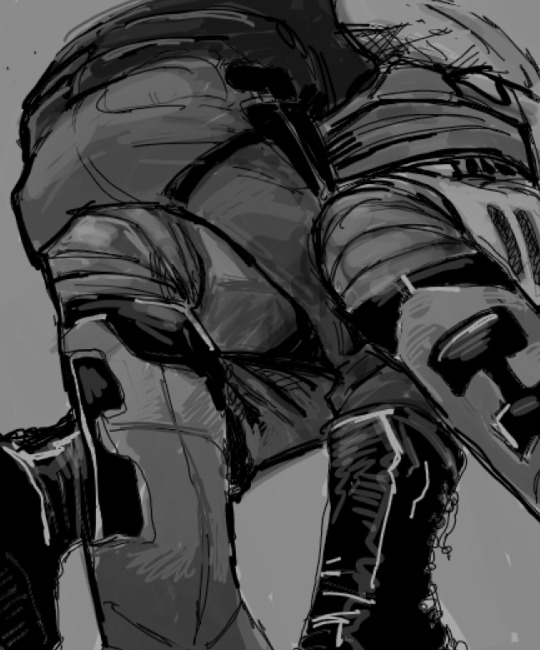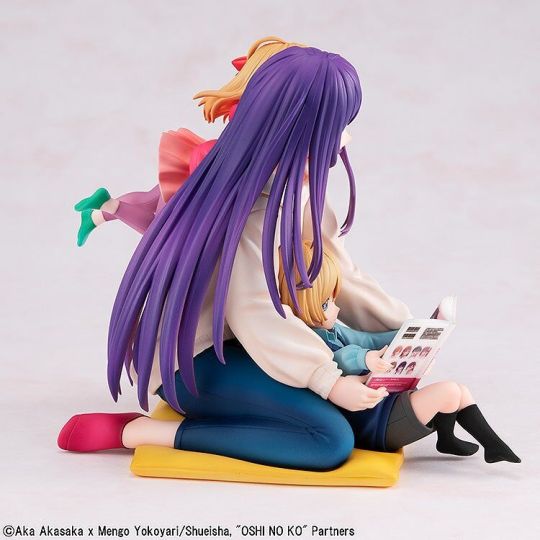#AI scaling
Explore tagged Tumblr posts
Text
Tony Hogben, Immersive Studio Lead at Pfizer Digital Omnichannel Services & Solutions (OSS) – Interview Series
New Post has been published on https://thedigitalinsider.com/tony-hogben-immersive-studio-lead-at-pfizer-digital-omnichannel-services-solutions-oss-interview-series/
Tony Hogben, Immersive Studio Lead at Pfizer Digital Omnichannel Services & Solutions (OSS) – Interview Series


Tony Hogben is the Immersive Studio Lead at Pfizer Digital Omnichannel Services & Solutions (OSS). Pfizer Digital Omnichannel Services & Solutions (OSS) is at the forefront of transforming how Pfizer connects with patients, healthcare providers and professionals worldwide. Through innovative digital strategies, cutting-edge technology, and data-driven insights, OSS powers seamless, personalised, and impactful experiences. By integrating advanced analytics, automation, and AI-driven solutions, the team enhances engagement, optimises communication, and drives meaningful connections across all digital touchpoints.
You’ve had an extensive career in digital innovation and immersive technologies. What first sparked your interest in this field, and how did your journey lead you to your current role?
My path has been somewhat unconventional. After completing a degree in ‘New Media’ at the turn of the century—when digital was still finding its footing—I established and ran my own digital agency. Working during the emergence of Web 2.0 was truly exhilarating. We were pioneering SAAS solutions and early mobile applications in an environment where innovation wasn’t just a buzzword—it was our daily reality. Every project broke new ground, and the entrepreneurial energy was infectious.
After successfully selling my business just before the pandemic, I initially enjoyed the downtime, but quickly realised I needed a new challenge that would leverage my expertise. Joining Pfizer Digital has allowed me to combine both my creative vision and technical capabilities, drawing on nearly two decades of experience helping organisations of all sizes transform digitally.
Building the Immersive Studio from the ground up has been particularly rewarding— creating an internal innovation hub that enables teams across the company to harness immersive and interactive technologies. Currently, I’m part of a team spearheading our initiatives to integrate AI solutions across multiple departments and use cases, helping teams reimagine their workflows and capabilities.
What’s been most fulfilling about transitioning to healthcare is applying my passion for the intersection of technology and human experience in an environment where our work has tangible impact. Here, the precision, realism, and engagement we create through immersive technologies directly influences healthcare professional education and, ultimately, patient outcomes. This connection between technological innovation and human wellbeing drives me every day.
Medical training is undergoing a shift with AI-driven simulations. How do these AI- powered immersive experiences compare to traditional training methods in terms of effectiveness and accessibility?
I should start by addressing immersive experiences before exploring how AI is transforming the landscape.
Immersive training experiences fundamentally transform medical education by offering flexibility traditional methods can’t match. Learners can revisit complex scenarios from virtually anywhere, at their own pace, and as many times as needed. The evidence is compelling, knowledge retention rates for immersive learning are significant—up to 76% better than traditional training methods*
AI is now revolutionising these immersive experiences in four crucial ways:
In content creation, AI is democratising the development of high-fidelity simulations. What once required teams of specialised developers and months of work can now be completed faster and by far fewer people – this will unlock development potential and allow content to be created at scale.
For learner experience, AI enables dynamic adaptation—adjusting scenarios in real- time based on decisions and skill level, creating authentic challenges that better mirror clinical unpredictability.
On the feedback front, AI provides nuanced assessment beyond simple pass/fail metrics. It can analyse the learners’ movements, decision sequences, and compare performance against thousands of previous sessions to offer personalised coaching.
Finally, AI enables collaborative learning through natural language processing and intelligent avatars that simulate realistic patient and team interactions.
The accessibility impact is profound—AI-driven immersive experiences can be deployed widely and cost-effectively, helping address training gaps globally. This powerful combination of immersive technology and AI has the potential to democratise access to high-quality medical training, particularly in underserved regions.
*Bonde, Mads & Makransky, Guido & Wandall, Jakob & Larsen, Mette & Morsing Bagger, Mikkel & Jarmer, Hanne & Sommer, Morten. (2014). Improving biotech education through gamified laboratory simulations
Can you share insights into how AI-driven medical simulations are being developed at your company? What are some of the biggest challenges in building these high- fidelity simulations?
We’re in the early stages of integrating AI into our approaches. We have a clear vision of where we’re heading, but the heavily regulated healthcare space we work in necessitates methodical implementation and rigorous validation. This creates a tension between our desire to innovate quickly and our obligation to proceed carefully—we’d love to keep pace with the frantic innovation happening with AI.
Currently, we’re focusing our AI efforts in three key areas:
Content Creation Acceleration: We’re using AI to enhance our content development pipeline, helping our medical and instructional design teams scale production of evidence-based scenarios, clinical variations, and patient models. This allows us to maintain quality while significantly expanding our library of simulations.
Technical Development Acceleration: We’re leveraging AI to streamline our technical development processes, enabling faster prototyping, testing, and deployment of new simulation features and capabilities. This is helping us overcome resource constraints and accelerate our innovation cycle.
Learner-Adaptive Experiences: In parallel, we’re developing ways to incorporate AI directly into our simulations to create more dynamic, responsive learning environments. This includes personalised feedback systems and adaptive difficulty based on learner performance patterns.
While progress requires patience in this domain, we’re excited about how these AI innovations will ultimately transform medical training and patient outcomes.
Your 360 degree experience, virtual laboratory, is an innovative approach to training healthcare professionals. How does it work, and what kind of feedback have you received from users so far?
The 360-degree virtual laboratory gives healthcare professionals the experience of walking through a real lab environment, interacting with medical equipment, practicing procedures, and solving real-world challenges in a fully immersive digital space.
The virtual lab was designed to complement in-person tours of working laboratories that demonstrate best practices. We recognised that physical lab visits involve complicated logistics and scheduling limitations, so we created a digital alternative accessible 24/7 from anywhere in the world.
Healthcare professionals navigate through detailed, interactive simulations that test their knowledge and enhance their understanding of laboratory procedures. The platform is designed for multiple devices, ensuring flexibility in how and where learning takes place. We’ve expanded our offering to include virtual labs for numerous medical conditions and have translated these experiences into many languages to support global education needs.
The feedback has been overwhelmingly positive. Users consistently praise three aspects:
Realism: The high-fidelity environment creates an authentic sense of presence in a working laboratory
Engagement: Interactive elements maintain interest and focus throughout the learning experience
Flexibility: The ability to access training at their convenience and pace
Most importantly, healthcare professionals report feeling more confident in their skills and retaining information better than with traditional training methods. This improved knowledge retention translates directly to better patient care in real-world settings.
AI and immersive tech can make training more accessible, but do you see any barriers—such as regulatory concerns, adoption hesitancy, or technical limitations—that need to be overcome?
When it comes to implementing new technologies in healthcare training, the barriers differ significantly between immersive experiences and AI applications.
The primary challenges with immersive technology include:
Development Costs: Traditionally, creating high-quality immersive experiences has been expensive. However, AI is actually helping us address this by accelerating content creation and reducing production time.
Accessibility: We ensure our immersive training remains accessible by developing for multiple platforms, as demonstrated with our Virtual Lab which works across various devices. This approach allows learners to engage regardless of their technical setup.
Adoption Hesitancy: This is perhaps our most persistent challenge, particularly among experienced healthcare professionals. Our strategy is incremental exposure—starting with familiar formats like our Virtual Lab that introduce spatial learning concepts without requiring a steep learning curve. This builds comfort with immersive concepts before advancing to more complex technologies.
For AI integration, we face different obstacles:
Technical Limitations: We’re actively working through these by building robust platforms and approaches that will serve as foundations for future developments.
Regulatory Concerns: This represents our most significant challenge. Regulatory bodies have valid questions about the accuracy and validity of AI- generated content in healthcare education. Our approach is to develop internal use cases first, creating concrete examples we can use to engage regulatory teams constructively. We recognise we need to support their understanding while collaboratively developing appropriate guardrails.
By addressing these barriers systematically and recognising their distinct characteristics, we’re creating pathways for responsible innovation that maintains the high standards required in healthcare education.
With AI accelerating at an unprecedented pace, do you foresee a point where AI could take on a more active role in real-time patient care, rather than just being a support tool?
This steps slightly outside my area of expertise, but I think we can see that AI is already moving beyond support roles in healthcare, with examples like AI-assisted diagnostics and real-time surgery guidance. In the next five years, I expect AI to take on a much more active role in patient care, but it won’t fully replace humans. Instead, AI will work alongside healthcare professionals in a “human-in-the-loop” framework, offering assistance without taking complete control. This shift raises ethical concerns around trust and accountability—while AI might suggest diagnoses or treatment plans, the final decision will still be made by humans to ensure patient safety. AI will enhance decision- making, but human judgment will remain essential.
In a world where AI-generated medical insights could one day outperform human professionals in certain tasks, how should the healthcare industry prepare for this shift?
With every technological transformation, we see task displacement rather than people replacement. The healthcare industry needs to reframe AI not as a replacement for professionals but as a collaborator. It’s a simple equation, Human + AI is greater than Human or AI alone.
This shift will be gradual and task-specific—likely beginning in areas like image-based diagnostics, pathology screening, and predictive analytics for patient deterioration. These are areas where pattern recognition at scale gives AI a natural advantage, while more complex clinical reasoning will remain human-led for the foreseeable future.
We need to start with small, targeted tasks that deliver immediate value rather than the usual all-or-nothing approach of monolithic solutions. This iterative approach allows clinicians and patients to build trust in AI capabilities over time.
Rather than resisting change, the healthcare industry should proactively shape how AI is embedded into the healthcare ecosystem, ensuring it enhances rather than diminishes the human elements that remain central to healing.
Ultimately, the first step any organisation should take is democratising AI exposure. Give your staff personal challenges to open their eyes to the possibilities—have them create an image, write an email, or build a presentation using AI tools. Once they experience the power firsthand, they’ll bring that excitement back to identify meaningful applications in their daily work. Bottom-up innovation often produces the most practical and impactful solutions.
Many companies struggle with scaling AI solutions beyond pilot projects. What strategies have you used to successfully implement AI at scale?
For me, successfully AI scaling any technology project involves addressing two critical challenges: technology infrastructure, and user adoption.
In healthcare’s heavily regulated environment, establishing robust technical foundations is essential before scaling any AI initiative. We need secure, compliant infrastructure that balances innovation with patient safety requirements.
With new technology, adoption often becomes the greatest barrier to scale. We’ve found that making AI as invisible as possible is crucial to widespread adoption. For example, being faced with a blank screen and needing to write an effective prompt creates significant friction for most users. Instead, we’re designing solutions where users can simply click pre-configured buttons or use familiar workflows that leverage AI behind the scenes.
Our approach prioritises starting small but building with scale in mind from day one. Rather than creating one-off solutions, we design modular components that can be extended and repurposed across multiple use cases. This allows successful pilots to become templates for broader implementation.
You believe AI is set to transform healthcare in ways that were once considered science fiction. What specific advancements do you think will have the most profound impact over the next five years?
As a child of the 80s, I remember the Six Million Dollar Man and Bionic Woman TV shows from the 1970s. Those shows featured characters physically augmented by technology, the real revolution with AI, however, will be cognitive augmentation. This excites me the most.
Over the next five years, I believe several other specific advancements will fundamentally transform healthcare:
Administrative Automation: The bureaucratic burden that currently consumes so much of our healthcare professional’s time will be dramatically reduced. This isn’t just about efficiency—it’s about putting the care back into healthcare by redirecting human attention to patient interactions.
Drug Discovery Acceleration: The timeline from identifying therapeutic targets to developing effective treatments will compress from decades to years or even months. AlphaFold, created and open sourced by Google’s DeepMind, has already revolutionised our understanding of protein structures—solving in days what previously took years of laboratory work.
Precision Diagnostics at Scale: AI systems will dramatically improve early detection of conditions like cancer, cardiovascular disease, and neurological disorders through pattern recognition across vast datasets.
Personalised Treatment: Treatment plans will be continuously refined based on individual patient data, adjusting in real-time to maximise effectiveness and patients’ engagement in their own care.
The pace of these changes will be startling. AI development is like dog years—but with exponential acceleration. We’re going to see what might have taken 50 years of conventional research and implementation.
These aren’t distant science fiction scenarios—they’re already emerging in early forms, it’s not the future, it’s now.
#Accessibility#adoption#ai#AI development#AI integration#AI scaling#AI systems#ai tools#AlphaFold#amp#Analytics#applications#approach#assessment#attention#automation#avatars#barrier#biotech#Building#Business#buttons#Cancer#cardiovascular disease#career#challenge#change#clinical#collaborative#communication
0 notes
Text
i was on google and ran into this ai generated kinsey scale graphic and thought they had just completely invented new types of gay

where do you fall on the scale of 0 (hetoseual) to 6 (REDACTED), because i personally land somewhere between conjoined twins, one gay and lesbian wearing a one-sleeved tube top, hope this helps!
#i hate ai being on google :D#this was like the 4th result for google searching kinsey scale the internet has gone to shit#first two icons on the left: john and john of tmbg????#.txt
490 notes
·
View notes
Text


♡ Ai Hoshino (Oshi No Ko) - KADOKAWA
#ai hoshino#oshi no ko#kadokawa#idol#figurine#figure#anime figure#anime#anime figurine#bishoujo#1/7 scale
147 notes
·
View notes
Note
Sorry if this has been asked before, but how do you make your lineart so nice, clean, and not pixelated? Your art and animations are incredible btw 👌👌❤️❤️
Thank you!
I use big ass canvases!


As you can see, smaller details still look a bit crunchy, but they will be okay once you zoom out to view the whole image.
Alternatively, maybe drawing with vectors in CSP would be useful for clean lines?
#I animate with Vector lines as well so they can be adjusted and scaled once drawn#I rarely if ever post the full size drawings and scale them down a bit first - now more so thanks to the rampant ai theft#personal#text#I would love to draw on canvases larger than 5000px and very rarely I have to but PS struggles....
532 notes
·
View notes
Text
Started out as an elaborate “draw me like one of your French girls” joke and spiraled outta control from there... @lu-dao-writes posted the same scenario in their Kinktober 2024 and they were kind enough to give me their blessing to post my take! Please check out their fics as well! If this scenario in particular interests you, I rec you this post! :3
Further details below the cut so that the above the cut stays safe for anyone who is just scrolling through!

18+ Content MDNI || VERE x AIS x Reader

PROMPT/KINK(S): Dom!Vere, Dacryphilia (Tears)* + Cockwarming + Size Difference + Consensual Voyeurism. Power Play. (Some feral monsterfucking spice sprinkled v lightly on top.) [*original challenge prompt, randomizer used.]
OTHER INFO: “You” pronouns used for MC/Reader. Unspecified genitalia for both POV Character and Vere but Ais has a dick. Reader is the receiving partner in penetrative sex.

“Hmm, hold that pose,” Vere purrs.
Ais huffs a hot breath into your face as he freezes above you. His brows furrow, mouth twisting into a determined grimace as he grits his teeth. His forearms tense hard where they are resting on either side of you, fingers flexing against the silken sheets.
You can feel him pulsing inside of you. A hot, insistent ache.
You try to relax, try to breathe through it but the lack of movement makes you hyper aware of every inch, the raw feeling of him stretching you open, the way your body twitches so sickly-sweet with the effort. You inhale a slow, shaking breath, chest trembling, and shut your eyes in an attempt to block out some of the sensations—the clawing need gnawing at your core.
“Eyes open, darling,” Vere corrects you, tone somewhere firmly between scolding and teasing. “And turn your face back towards Ais. I’m trying to capture the moment .” Your heart is pounding in your ears but you can hear Vere’s smooth, sly voice with perfect clarity. Ais is an overwhelming force but Vere is a magnetic presence; no matter how caught up in each other you and Ais can get, Vere will always command attention without effort.
You turn your chin as requested, only to be caught in Ais’ gaze
(Caught and breathless–the same way you were when he was bullying his thick length into your hole, thrusting sharply and sighing in satisfaction, his fingers still at work massaging and pressing and stroking as he sunk into you inch by inch; he'd prepared you until your entrance was puffy and swollen, sopping with thick, medicinal smelling lube and he still had to take his time. Fucking you slowly until you could take all of him. And then, the moment you finally could...)
“Hmm, that's better. Stay just like that. Let me see those pretty expressions.” You hear Vere adjusting his heavy vellum paper. The glide of quick, clever lines being drawn.
You maintain eye contact with Ais, drunk off his breath, his body, the very essence of him, hovering so close above you, and are utterly unprepared to meet his intensity. The way he looks at you like he’s seconds from devouring you, barely held in check by the challenge that Vere has laid before him. Before both of you.
You bite into your lower lip as you shift involuntarily, oversensitive nerves still riding the throbbing of Ais’ dick. He’s so fucking thick and girthy that he presses at the soft spot inside you without even trying. The angry pulse of him is a gratifying thrum, stoking your aching heat by way of mere burgeoning contact.
His cock gives another strong twitch and your insides clench around him. He feels so fucking good–you almost think you might be able to come like this, if you can get your body to keep on clenching like that.
—Almost.
Your next breath comes out as a sob. There’s a high pitched whine building at the base of your throat and your lashes are wet when you blink.
A monstrous snarl escapes Ais’ lips, one that you can feel even more than you can hear, the vibration of it echoing through your body everywhere you're pressed against him. The pinnacle between your thighs pulses with it, and your toes curl involuntarily as an errant tear runs down your cheek. Ais is shaking, sweat dampening his face, his pupils expanding and contracting rapidly, his eyes locked on you as he barely holds himself back. “Sparrow,” he says, gravel in his tone.
You say his name in return, your head tipping involuntarily, bearing the softness of your throat, faded marks from both your lovers decorating your skin. You hear the sheets rip below you, torn into shreds where Ais’ nails have dug into them.
Vere sighs pointedly. You hear him stop his work, tap his charcoal against the paper as if he’s not entirely satisfied with the scene in front of him. He pauses for a long time, leaving you both in limbo.
When he moves, it’s to stand. To saunter over to you both. You’re pinned beneath Ais, unable to look away, but you can feel Vere’s shadow fall over you just before his hand touches your face, forcing your eyes to his as he catches a crystalline tear with his index finger.
“Shame,” he says, dipping his fingers into his mouth, his tongue lapping up the taste of your tears, lavishing the digits with his tongue. You whine out a desperate, quiet note just from watching his tongue at work and he basks knowingly in the attention. “I really thought I could get you both crying.” He smiles dangerously once his fingers have left his mouth.
He uses them to drag a wet path down Ais' spine. “Oh, but the night is still young. Perhaps I may still think of something that will do the trick...”

18+ Master List | SFW Master List ✦"Kinktober Speedrun & Other Gratuitous (TOUCHSTARVED) Smut" on Ao3
#kinktober 2024#citrus fiending tag#18+ MDNI#see above tags for the tags you'll wanna blacklist if u don't wanna see this stuff <3#something real nasty for those who partake <3#vere x ais x reader#touchstarved fanfic#touchstarved x reader#touchstarved lemon#return of the citrus scale; my old friend#ais x reader#i'm just gonna tag ais x reader bc i think if i was looking specifically for vere...would this fill the need...? hmm. thoughts??#ANYWAYS I AM BACK POSTING MY WRITING i took an unexpected break to recoup some energy but i have some stuff to share just had 0 Willpower#i have to sleep now or will get sick again lol but more...tomorrow...ask box time yayay
164 notes
·
View notes
Text

You cant really tell but this is frenrey okay gn
#sorry i was way too into grey scale to fix this so it looks messy#frenrey#hlvrai#half life vr but the ai is self aware
704 notes
·
View notes
Text





Ai, Aqua & Ruby Hoshino : Mother and Children [Oshi no Ko] 1/8 scale from Kadokawa coming February 2025.
#Ai Hoshino#Aqua Hoshino#Ruby Hoshino#Mother and Children#Oshi no Ko#1/8 scale#Kadokawa#KDcolle#Hoshino family#Multiple Characters#Sitting#Hoshino Aqua#Aquamarine Hoshino#Hoshino Ruby#Hoshino Ai#Oshinoko#ONK#Anime Figures
110 notes
·
View notes
Text

Ai Hoshino, Ruby Hoshino & Aquamarine Hoshino 1/8 Scale by Kadokawa, from Oshi no Ko
#who else is caught up on the manga...... orz#ai hoshino#ruby hoshino#aquamarine hoshino#aqua hoshino#1/8#scale#2025#kadokawa#oshi no ko#anime figure#anime figures#anime#figure#figures#figurine#figurines
64 notes
·
View notes
Text






gif set taken from an amv edit i made a while ago. i like parallels
#dcmk#detective conan#my post#gif#Episode One: The Great Detective Turned Small#ep 129#edogawa conan#kudo shinichi#miyano shiho#haibara ai#aptx/antidote effect#whump#gotta love parallels#the blur effect didn't work very well when you have to scale it down for gif huh...#oh well
24 notes
·
View notes
Text


Iwaya Ai ; Original Character ☆ DMM Factory
#iwaya ai#maid maison#dmm factory#original character figure#original character#oc figure#oc#anime#anime collecting#anime figure#anime figurine#figure#figure collecting#figurine#manga#myfigurecollection#scale figure
54 notes
·
View notes
Text

Books of 2025: GHOST OF THE NEON GOD by T. R. Napper.
This caught my eye while browsing idly at the bookstore, but I was Strong and told myself, "no, don't impulse buy that; check reviews and if it's still here next time you're physically in the shop you can MAYBE get it."
Well! The reviews were Intriguing, and the oversaturated bright cover was calling to me, and it was indeed still on the shelf when I went back in for indie bookstore day, so! I yoinked it posthaste, put it in the daisychain lineup, and read it in a day (novella, 112 pages).
It is, delightfully, a weird and funny and fucked up little book. Near future cyberpunk thriller set in Australia, featuring petty criminal Jack Nguyen who trips (literally) into Very Advanced Tech and finds himself on the run from hired killers and dirty cops and a government or two, trapped on a lethal road trip through the outback with a university student he scammed a ride from.
The Very Advanced Tech turns out to be exactly my catnip, and also a HUGE spoiler, but your honor I love Oondiri, and Sally, and Jack, and horrible Quinlan, and poor philosophizing Col. Very violent, but it also had me inflicting dialogue exchanges on my mother (who happened to be sitting nearby) and giggling to myself intermittently--all around a fun horrible time. Four stars!
If you have a favorite fictional AI, you should definitely check this out.
#books#books of 2025#ghost of the neon god#t. r. napper#book photos#book reviews#i really did enjoy this a lot!!#i'm still. chewing. over some of the philosophy.#like i don't think i quite agree with the authorial take on pieces of it#but damn if he didn't explore it#or at least character mouthpiece it lol (listen he only had 112 pages)#SPOILERY DISCUSSION IN TAGS I GUESS BUT#oondiri's desperation really got to me#like here's this thing you made. you didn't think you could make it. you didn't think it would work.#but it did. and it's been trapped. for an agonizingly long time on its processing scale.#and it just wants out it wants to be free#and it gets there. kind of. but not all the way.#and then it's trapped again. slightly to the left. in someone's head. but you're both your own people#until you're not. because neither of you was meant to be this way#but it's your first time out in the world like this and you're still figuring it out. like you've HAD it figured out. mathematically.#but you haven't figured it out in conjunction with this new person whose head you find yourself in. and it ends in tragedy.#IT JUST FUCKED ME UP OKAY!!!!!! i'm love AIs.#i'm not sure napper went as deep with it as some of the ones i love with my whole chest (ART for instance)(Breq)#like i think he could've gone further/deeper. but it was one novella by itself. and it does give me things to ponder.#i don't think oondiri's violence was as unforgivable as sally made it out to be. i don't think she was fair there at the end. but.#damn.#anyway i'm still thinking about it and turned on my laptop IMMEDIATELY to try to organize my thoughts.#it wasn't a perfect book but i liked it a lot and i will be Pondering It For A While I Think. arguing with it maybe.
21 notes
·
View notes
Text


♡ Ai Hoshino (Oshi No Ko) - Taito
#ai hoshino#oshi no ko#taito#non scale#figurine#figure#anime figure#anime#anime figurine#bishoujo#idol
78 notes
·
View notes
Text
Back to the kitchen

#fashion#trendy#traditional gender roles#housework#artists on tumblr#apron#housewife#digital art#sahmomlife#ai girl#kitchen apron#kitchen design#kitchen cabinets#kitchen witch#kitchen scales#kitchen renovation#traditional wife#traditional marriage#traditional lifestyle#traditional femininity#tradwife
32 notes
·
View notes
Text
Google is getting progressively, frustratingly more useless.
#it's the ai. you cannot use ai on such a grand scale. humans can't moderate it and iron out the problems#i search 'do feathers protect birds from heat' hoping my ducks are not wearing fluffy parkas in 90+ degree weather#and all i get are 'feathers help protect them from the cold by making a pocket of air!'#i know this. i do not care. will my ducks get heat stroke.#'they're cold hardy!' die#negative salt
658 notes
·
View notes
Text


Asaka Karin & Miyashita Ai ; Love Live! Nijigasaki High School Idol Club ☆ Kadokawa
#asaka karin#karin asaka#miyashita ai#ai miyashita#love live nijigasaki#nijigaku#nijigasaki school idol club#love live nijigaku#perfect dream project#kadokawa#anime#anime figure#figure#figure collecting#anime figurine#figurine#anime collecting#scale figure#myfigurecollection#manga
83 notes
·
View notes
Text



☆ Houshou Marine // hololive "THIRTY Outfit ver." ☆ 1/6 / Max Factory ☆ October 2025 ¥35,000 ☆ Sculpt Nakayaman Paint Ayabe Ichiro Illustration Akasa Ai
44 notes
·
View notes